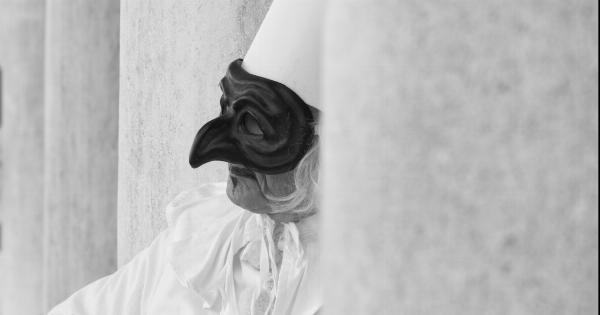Tuberculosis (TB) is a contagious bacterial infection that primarily affects the lungs, although it can also spread to other parts of the body, such as the kidneys, spine and brain. TB is a serious illness that can be fatal if left untreated.
It is important to spot TB early to prevent it from spreading and causing more damage to the body. However, TB can be difficult to spot as it can disguise itself in different ways. Here are some tips on how to spot TB in disguise.
1. Persistent Cough
A persistent cough that lasts for more than three weeks is one of the most common symptoms of TB. The cough may produce sputum or phlegm, which may be bloody. However, a persistent cough can be mistaken for a common cold or flu.
If you have a cough that does not seem to go away, consult a doctor.
2. Chest Pain
Chest pain is another common symptom of TB. The pain may be felt in the chest or upper back and may be sharp or dull. It can also be mistaken for musculoskeletal pain or heartburn.
If you have chest pain that is accompanied by other TB symptoms, seek medical attention immediately.
3. Fever and Night Sweats
Fever and night sweats are also common symptoms of TB. If you have a high fever that is accompanied by chills and night sweats, it may be a sign of TB. However, fever and night sweats can also be symptoms of other illnesses, such as malaria or HIV.
If you have these symptoms, consult a doctor.
4. Fatigue and Loss of Appetite
Fatigue and loss of appetite are two symptoms that can often be overlooked as they can be caused by a variety of factors. However, if you experience fatigue and loss of appetite that persist for more than a week, it may be a sign of TB.
5. Shortness of Breath
Shortness of breath is another symptom of TB. If you experience shortness of breath that is accompanied by other symptoms, such as chest pain or coughing, seek medical attention immediately.
It can be mistaken for other respiratory or cardiac conditions, so it is important to have it checked out.
6. Swollen Lymph Nodes
Swollen lymph nodes are a sign that your body is fighting an infection. If you have swollen lymph nodes in your neck, armpit or groin that are tender to the touch, it may be a sign of TB.
However, swollen lymph nodes can also be a symptom of other illnesses. If you have swollen lymph nodes, consult a doctor.
7. Unexpected Weight Loss
Unexpected weight loss is a common symptom of TB. If you have lost weight without intending to, it may be a sign of TB. However, weight loss can also be a symptom of other illnesses, such as cancer or HIV.
If you have unexplained weight loss, consult a doctor.
8. Skin Lesions
Skin lesions can also be a sign of TB. If you have bumps or sores on your skin that do not heal or that come back after going away, it may be a sign of TB. However, skin lesions can also be a symptom of other illnesses, such as syphilis or leprosy.
If you have skin lesions, consult a doctor.
9. Eye Symptoms
Eye symptoms can be a sign of TB. If you have eye pain, redness, sensitivity to light, or blurred vision, it may be a sign of TB. However, eye symptoms can also be a symptom of other illnesses, such as conjunctivitis or glaucoma.
If you have eye symptoms, consult a doctor.
10. Symptoms in Other Parts of the Body
TB can affect other parts of the body, such as the kidneys, spine, and brain. Symptoms of TB in these parts of the body can vary depending on the location of the infection.
If you have symptoms in other parts of the body, such as difficulty urinating, back pain, or headaches, seek medical attention immediately.
Conclusion
TB can disguise itself in different ways, which can make it difficult to spot. However, by knowing the common symptoms of TB, you can seek medical attention early and prevent the spread of the infection.
If you have any of the symptoms mentioned above, consult a doctor. Early diagnosis and treatment can greatly improve the outcome of TB.




























